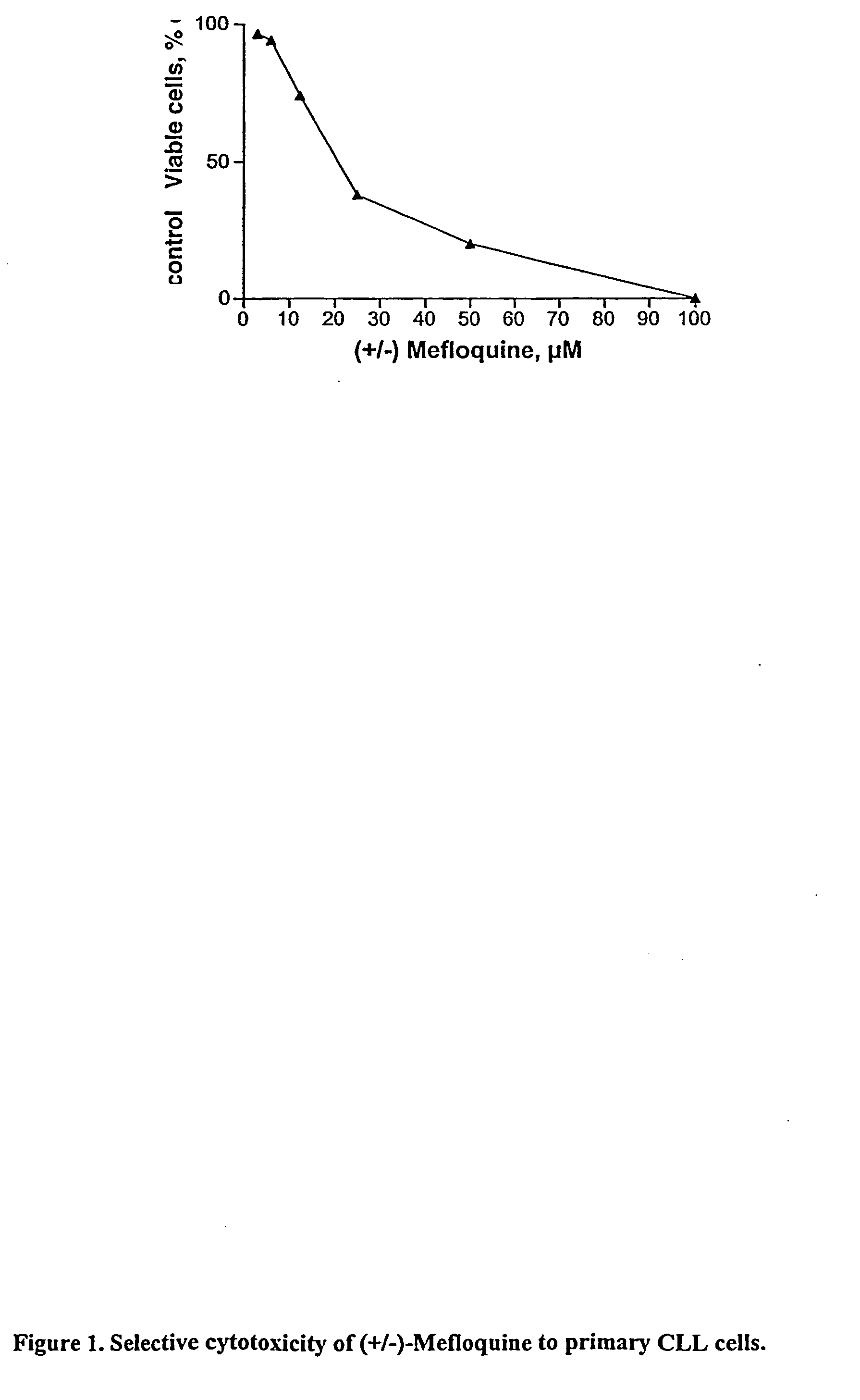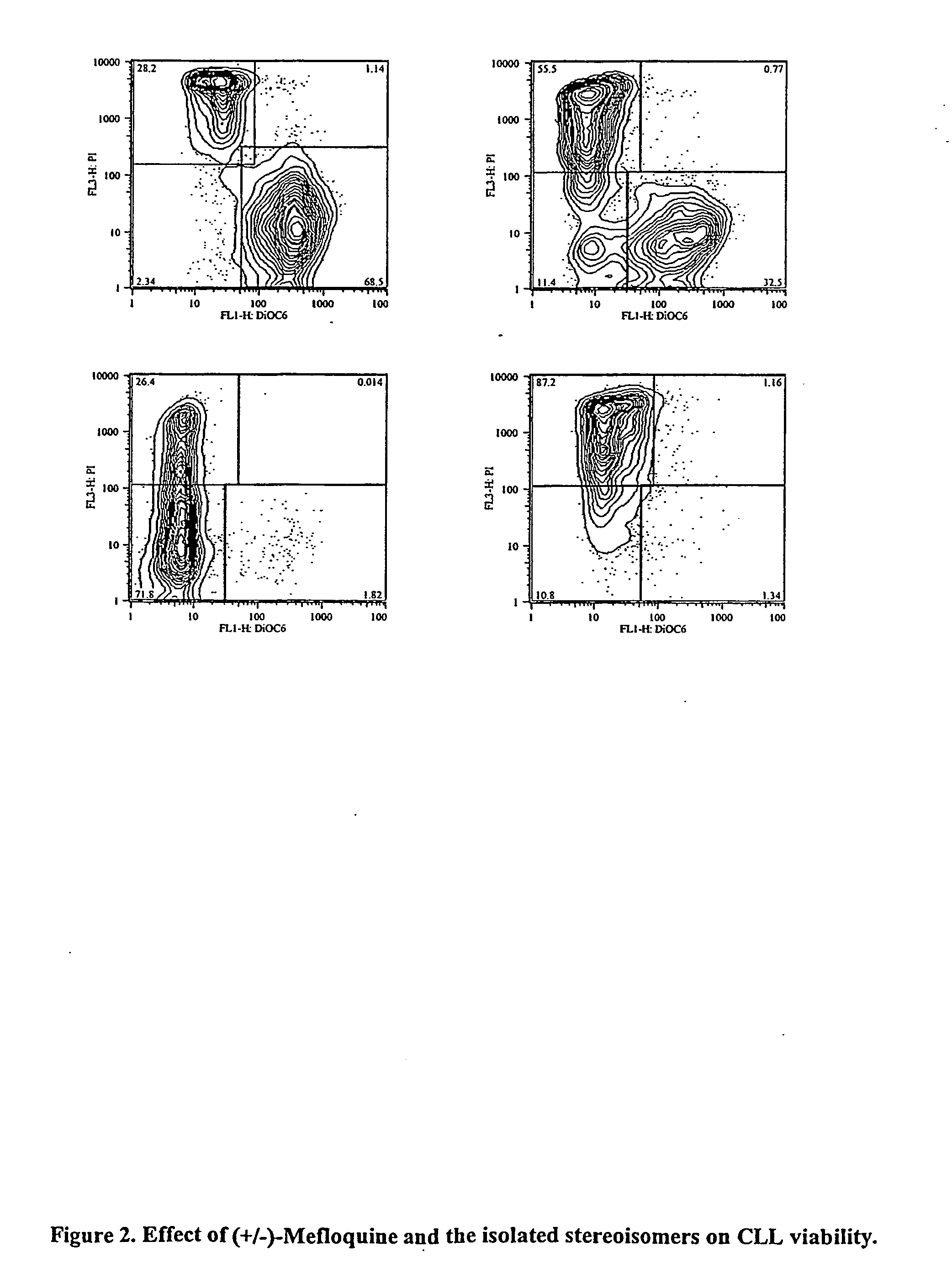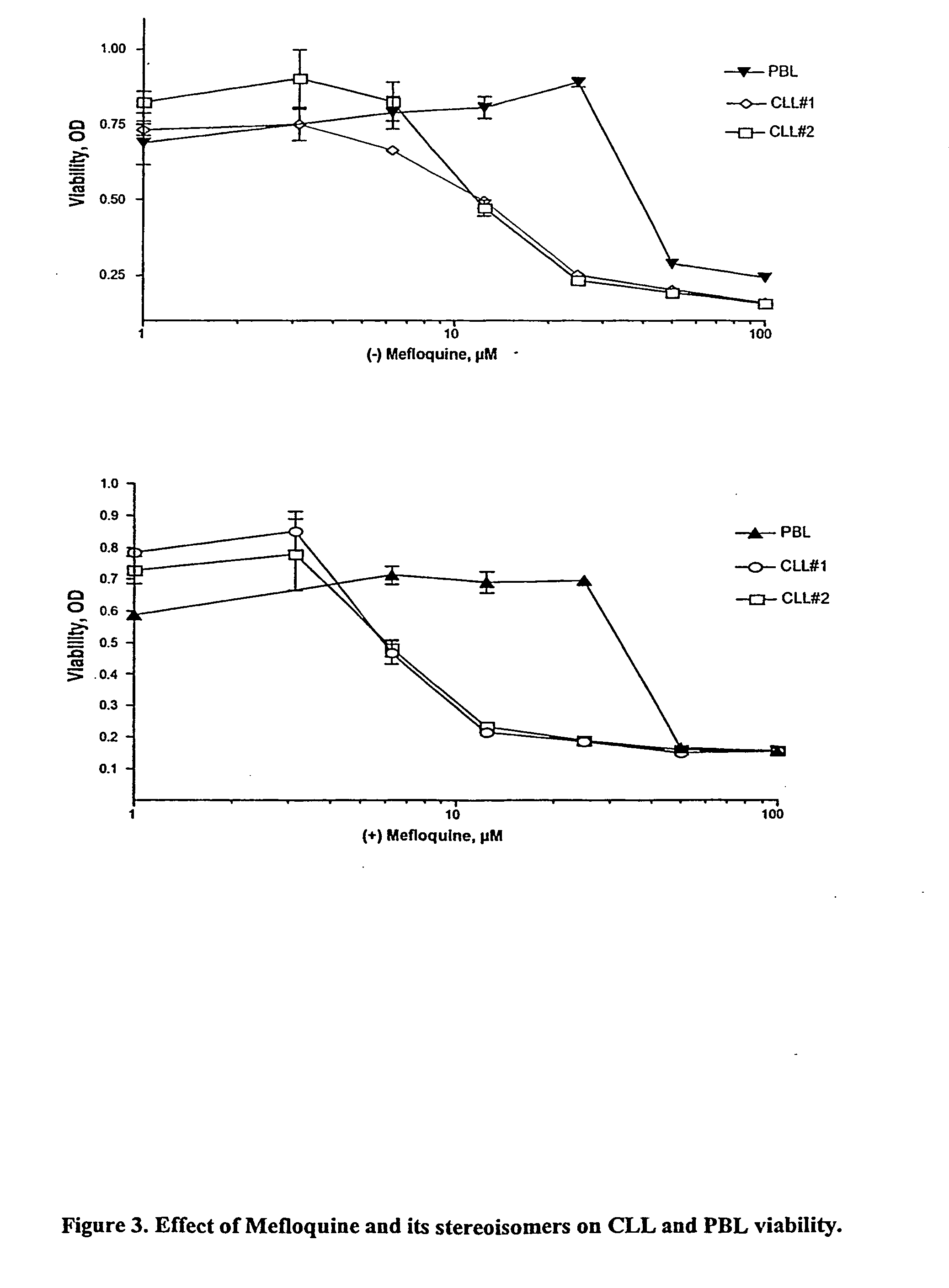Treatment of cancer with mefloquine, its purified enantiomers, and mefloquine analogs
a technology of mefloquine and cancer, applied in the field of cancer treatment, can solve the problems of bone marrow failure and organ failure, hematological malignancies such as leukemia and lymphomas, and remains difficult to treat many hematological malignancies
- Summary
- Abstract
- Description
- Claims
- Application Information
AI Technical Summary
Benefits of technology
Problems solved by technology
Method used
Image
Examples
example 1
[0061] Chronic lymphocytic leukemia cells (CLL) isolated from blood of two different CLL patients (CLL #1, CLL #2), and control normal lymphocytes (PBL) isolated from a healthy volunteer were exposed to concentrations of 5, 10, 25, 50 and 100 μM, of the racemic mix of mefloquine (±). After 48 hours exposure, the number of viable cells was determined by dye exclusion and flow cytometric analysis. The results are shown in FIG. 1, where the x axis represents the mefloquine concentration and the y axis represents the number of viable cells, normalized to the untreated controls. The (±)-mefloquine was found to be inducing potent apoptosis in CLL cells at 10 μM, but not against normal lymphocytes.
[0062] The (±)-mefloquine was also found to be able to induce apoptosis against myeloma cell lines RPM18226 (IC50 of 10-20 μM).
example 2
[0063] Chronic lymphocytic leukemia cells (CLL) isolated from blood of CLL patients were exposed to 10 μM of the racemic mix of mefloquine (±), the isolated mefloquine enantiomers (+) and (−), or vehicle alone (“untreated”). After 24 hours exposure, the percentage of living (lower-right corner), apoptotic (lower-left corner) and dead (higher-left corner) were analyzed by flow cytometry using propidium iodide (y axis) and DiOC6 (x axis). The results, showing the activity of the (+) and (−) enantiomers against CLL cells, are seen in FIG. 2.
example 3
[0064] Lymphocytes isolated from blood of CLL patients (CLL) and from normal healthy volunteer (PBL) were exposed to various concentrations of purified (−)-mefloquine ranging from 1.0 to 10.0 μM. After 24 hours exposure, the number of viable cells was determined by dye exclusion and flow cytometric analysis. The results are shown in FIG. 3. The y axis represents the number of viable cells, normalized to the untreated controls.
PUM
| Property | Measurement | Unit |
|---|---|---|
| concentrations | aaaaa | aaaaa |
| concentration | aaaaa | aaaaa |
| wavelength | aaaaa | aaaaa |
Abstract
Description
Claims
Application Information
 Login to View More
Login to View More - R&D
- Intellectual Property
- Life Sciences
- Materials
- Tech Scout
- Unparalleled Data Quality
- Higher Quality Content
- 60% Fewer Hallucinations
Browse by: Latest US Patents, China's latest patents, Technical Efficacy Thesaurus, Application Domain, Technology Topic, Popular Technical Reports.
© 2025 PatSnap. All rights reserved.Legal|Privacy policy|Modern Slavery Act Transparency Statement|Sitemap|About US| Contact US: help@patsnap.com



